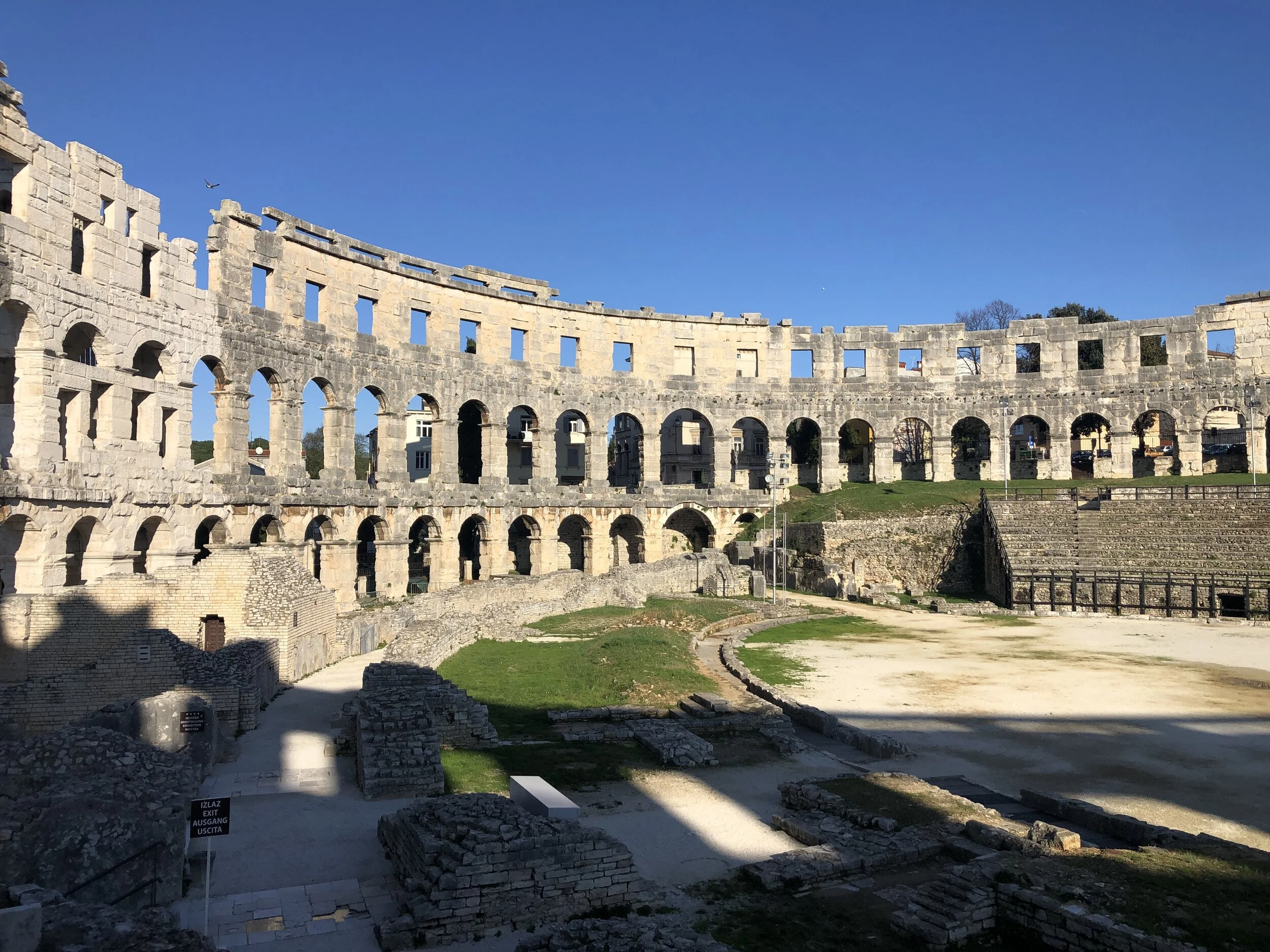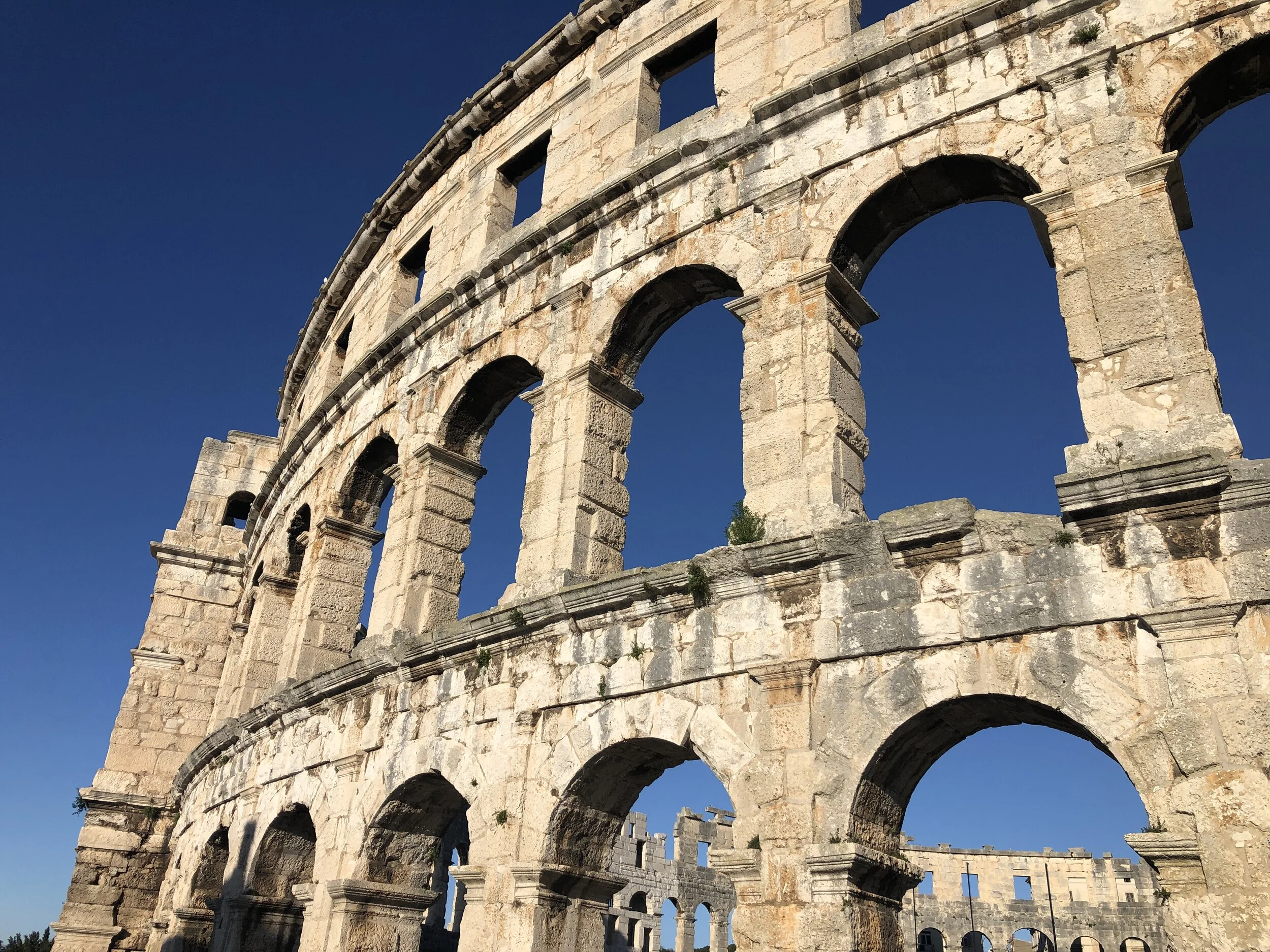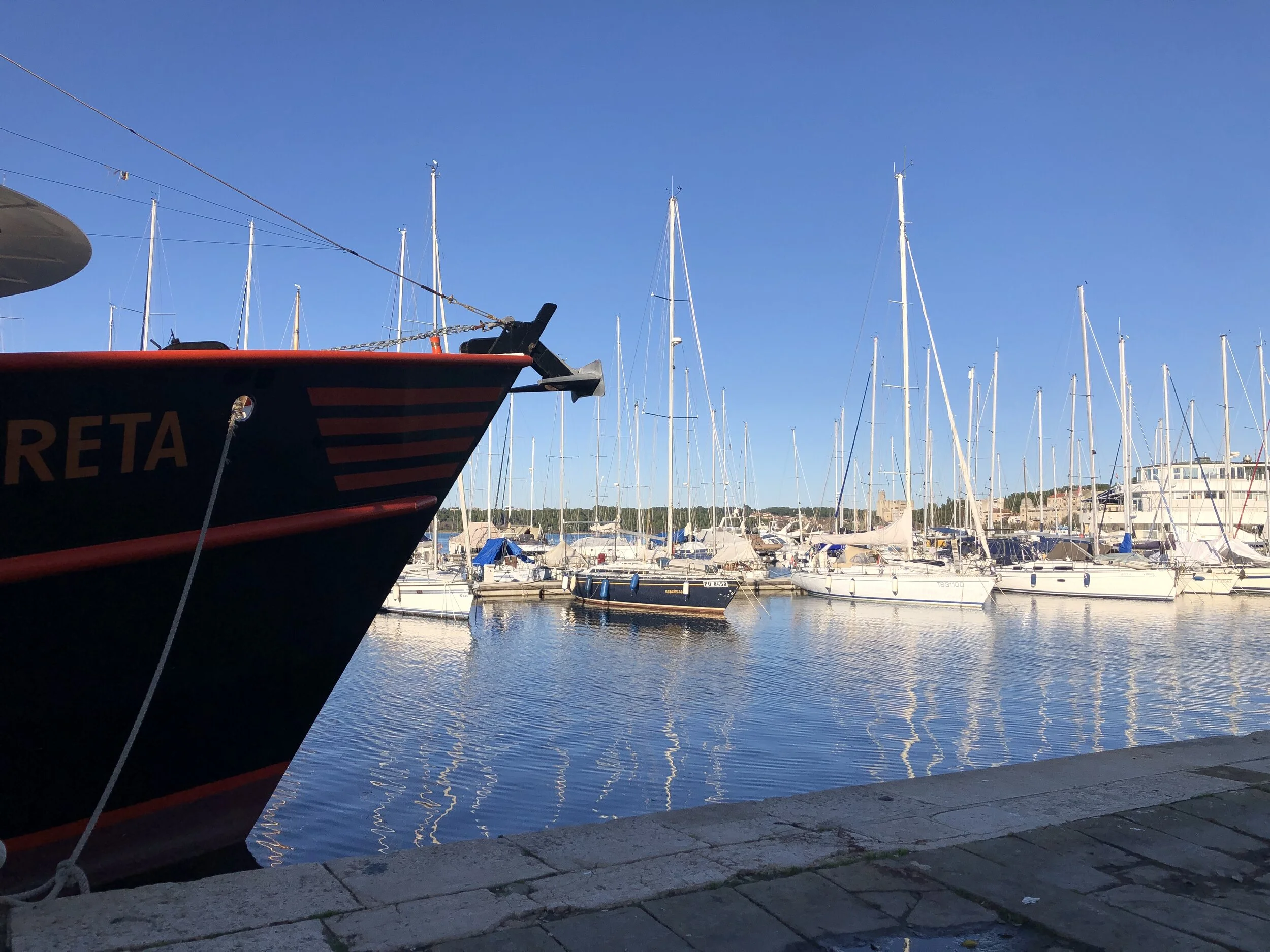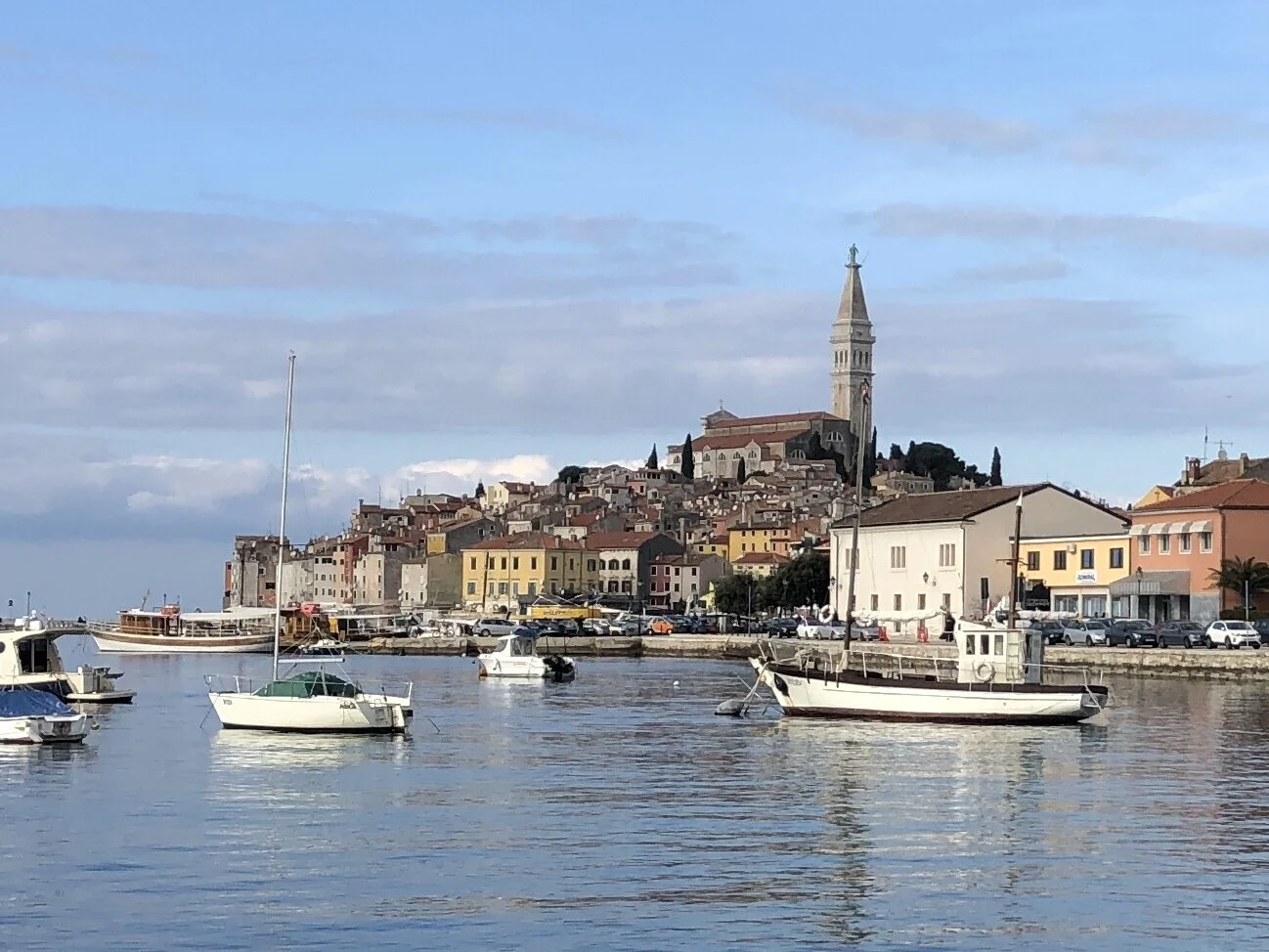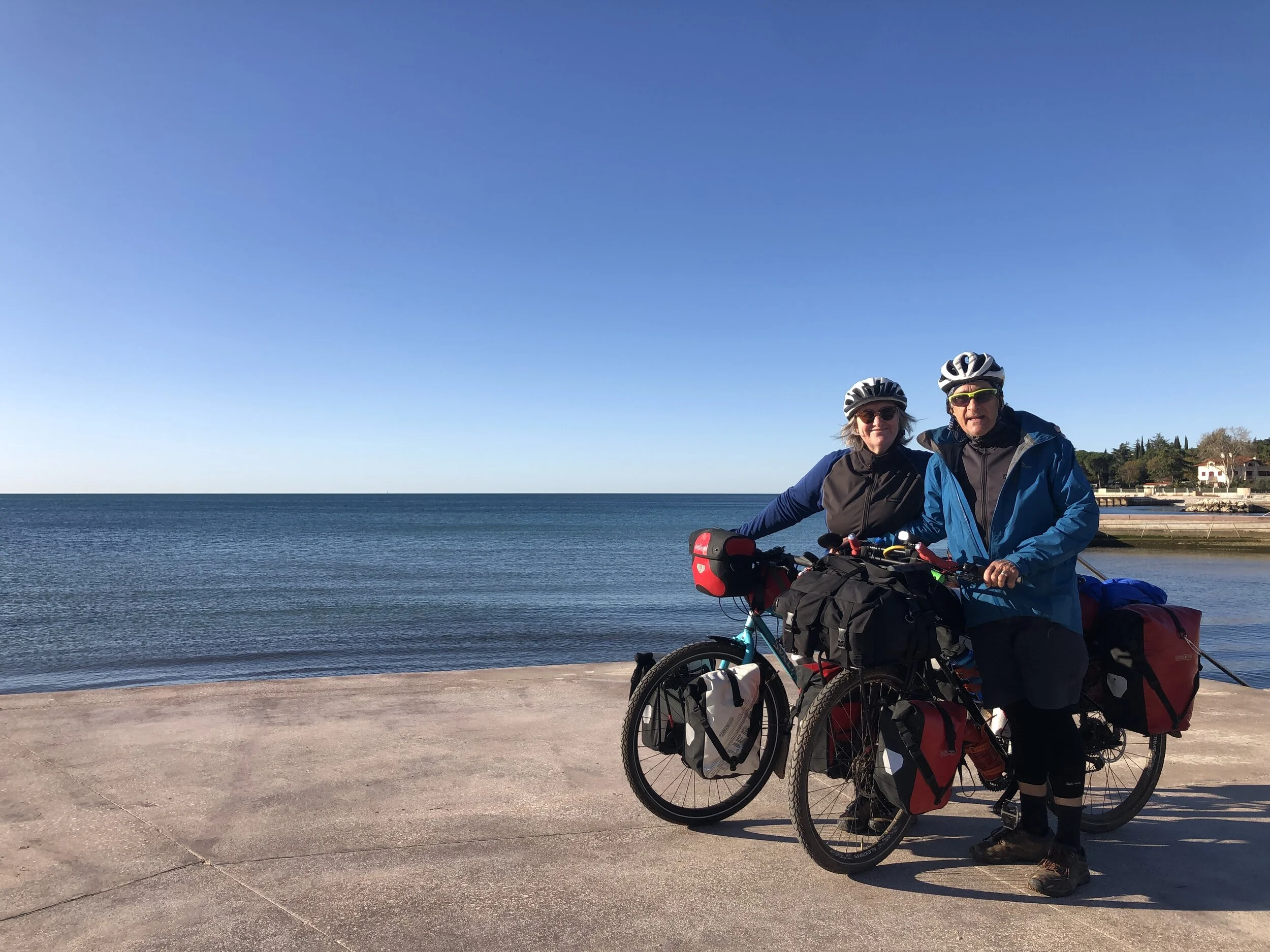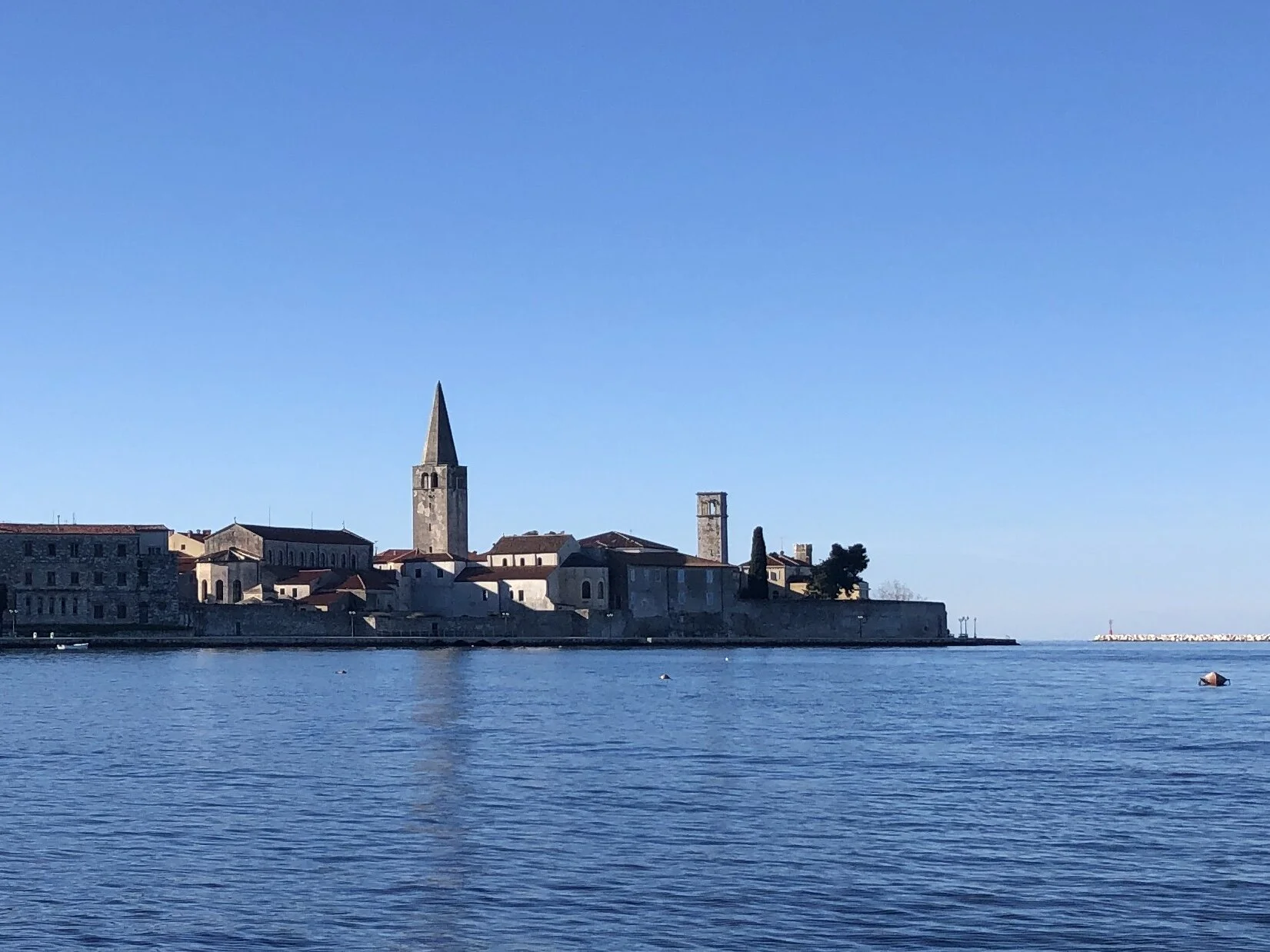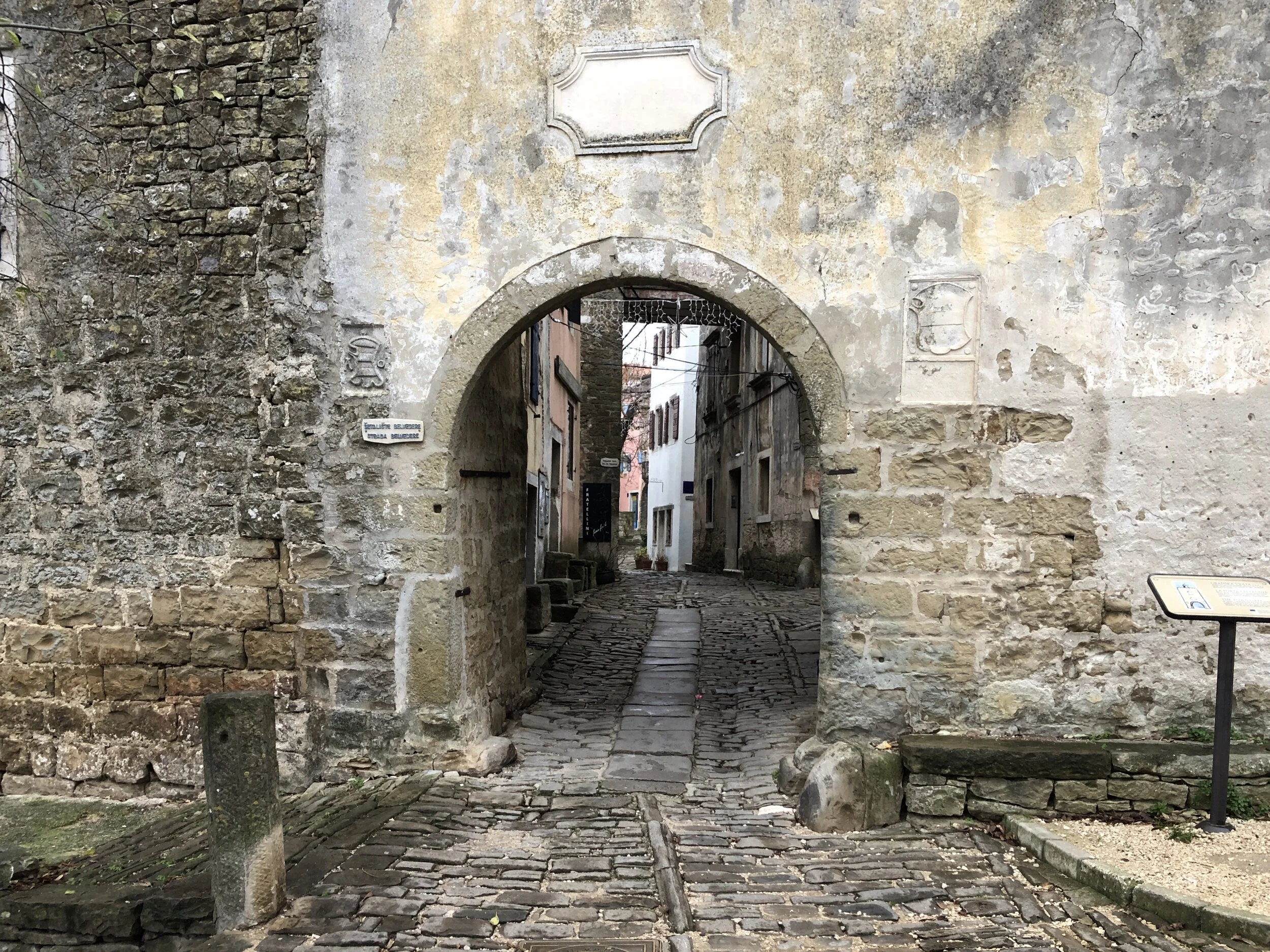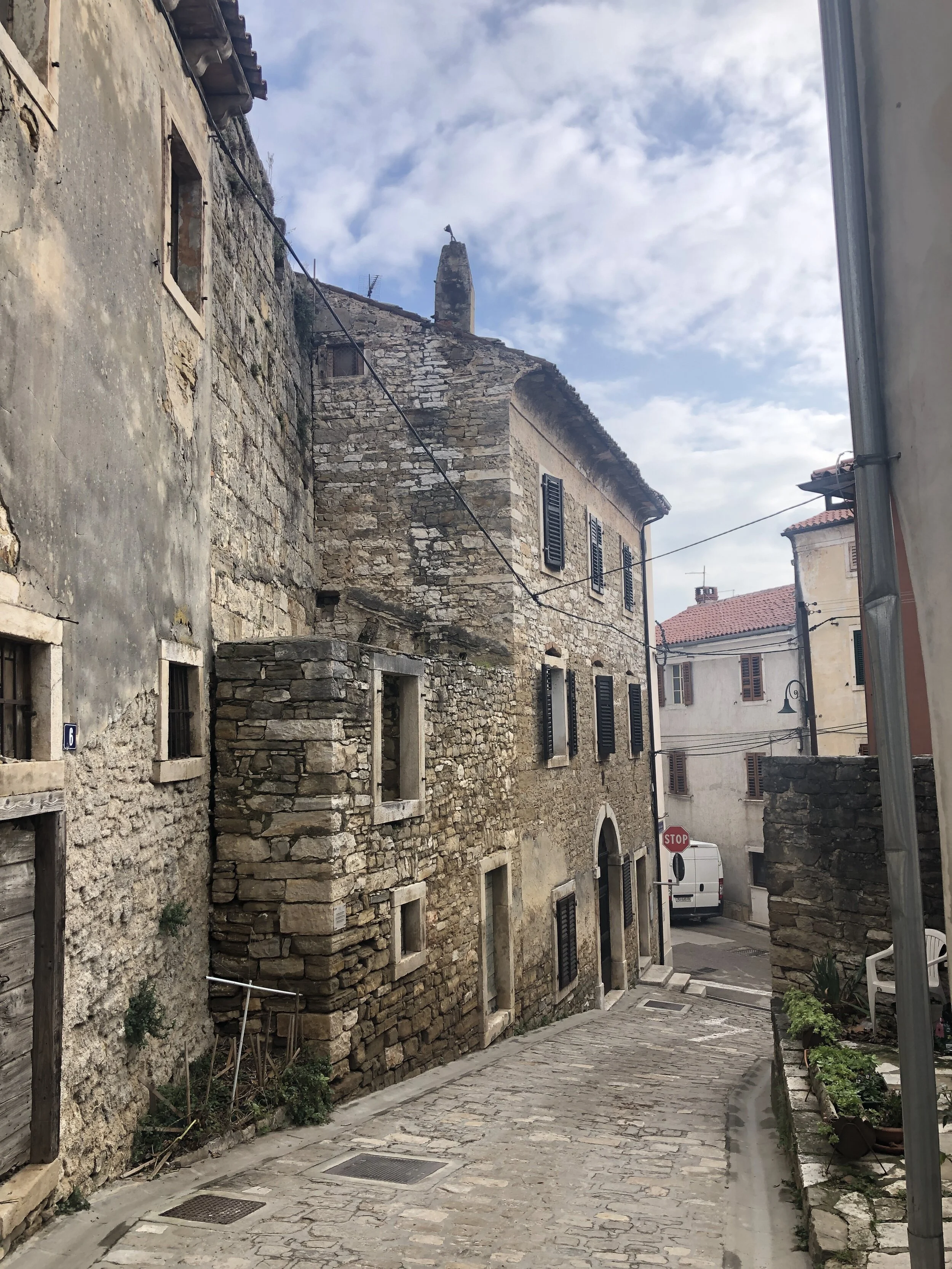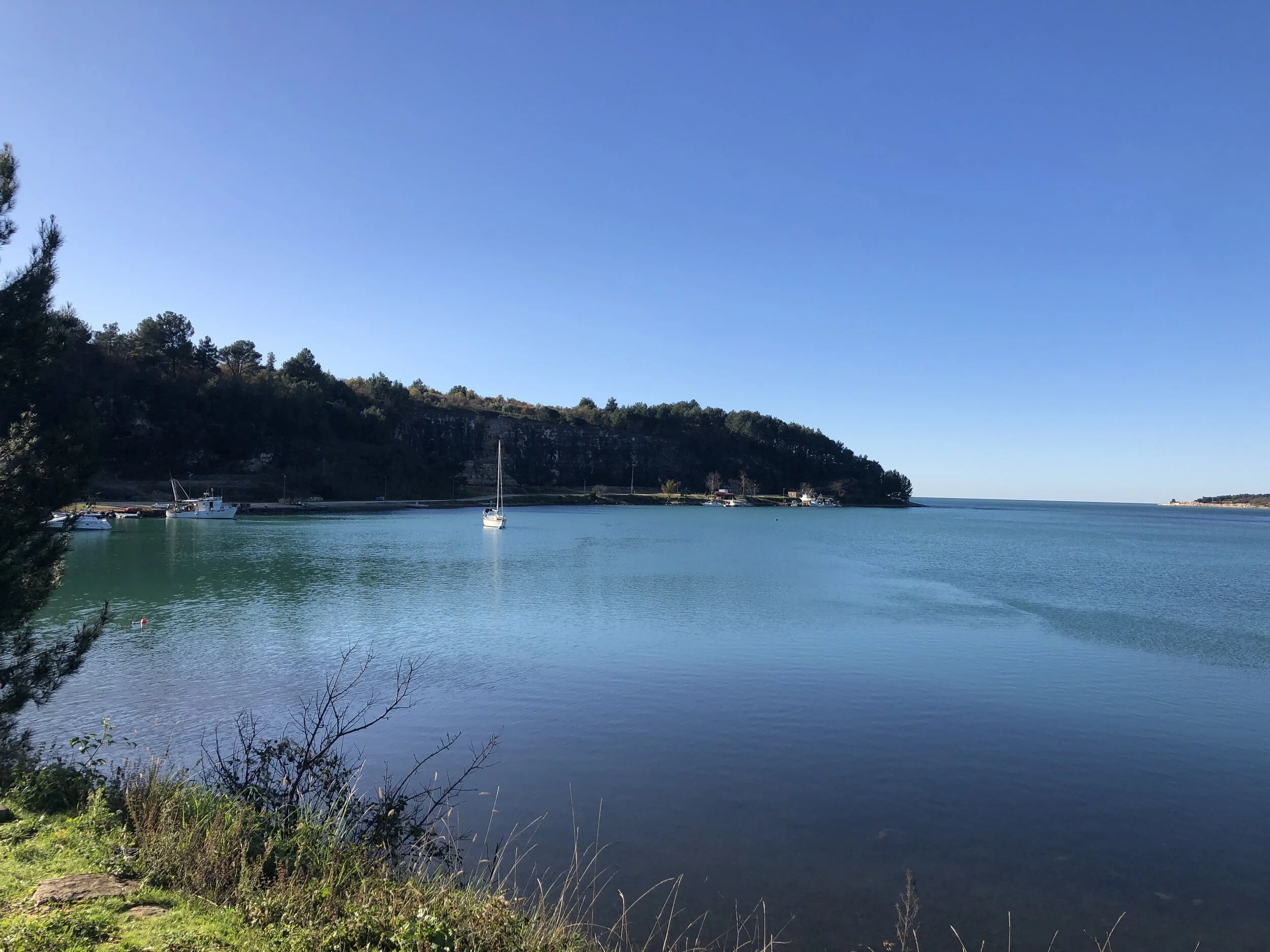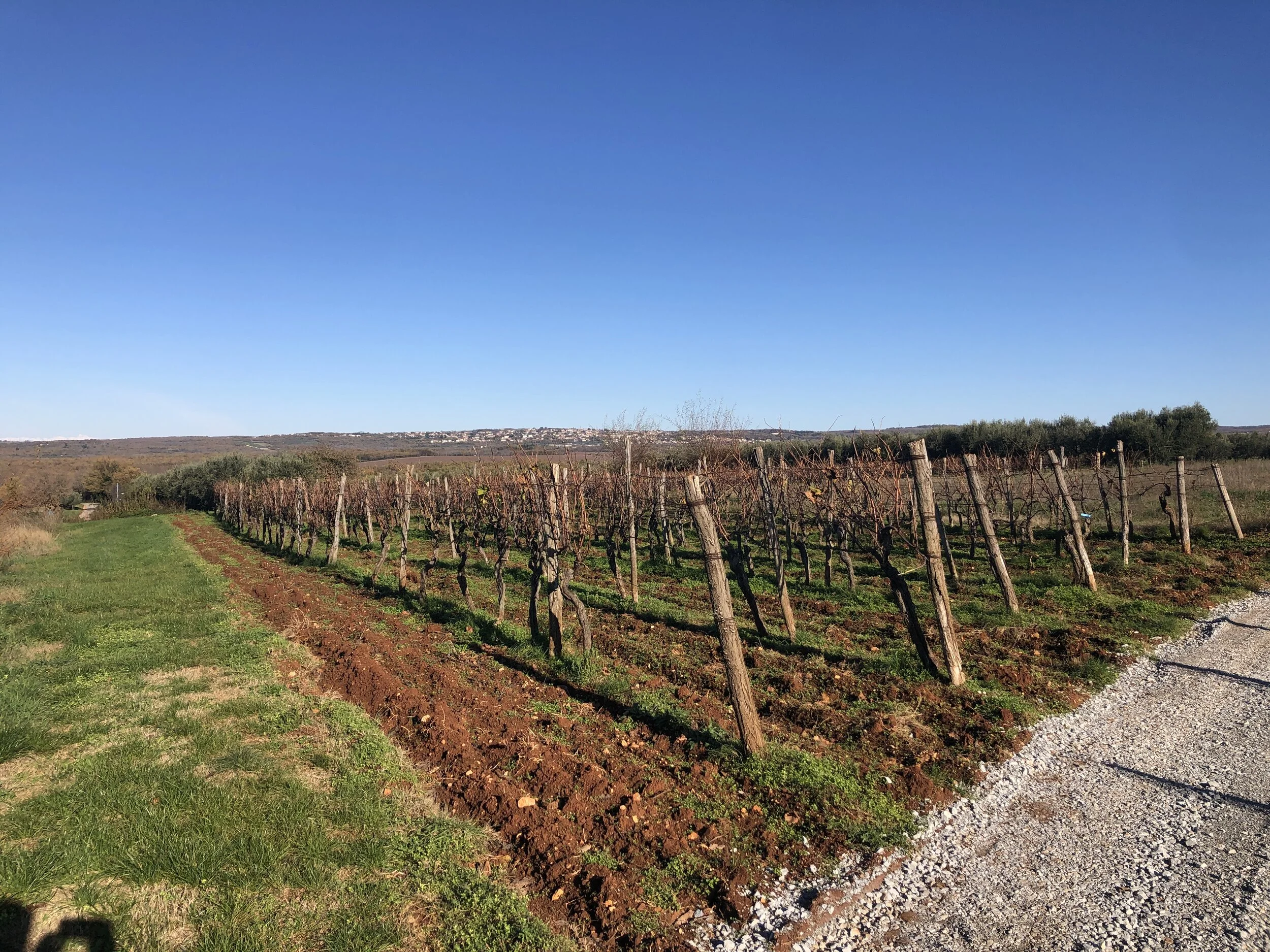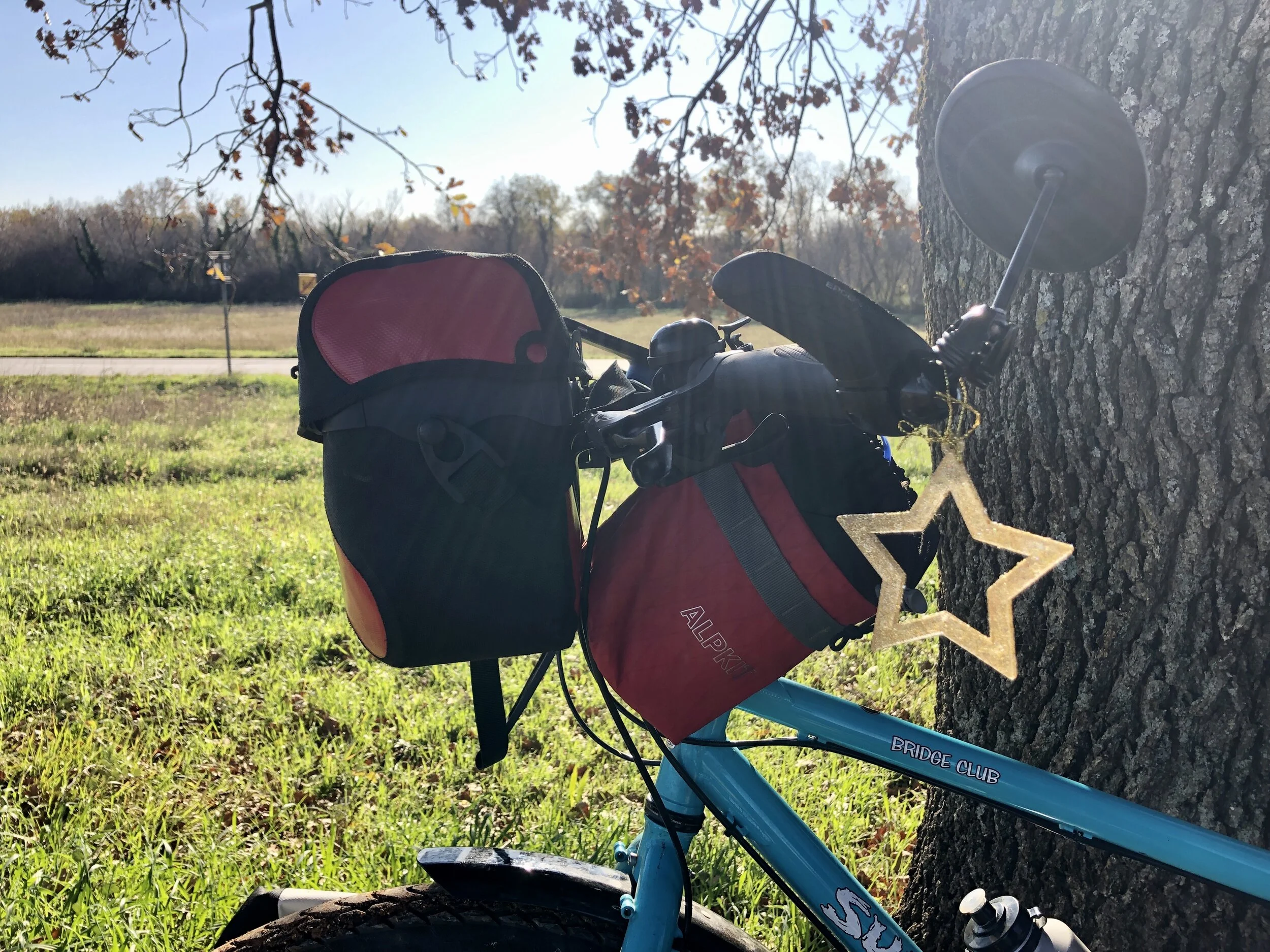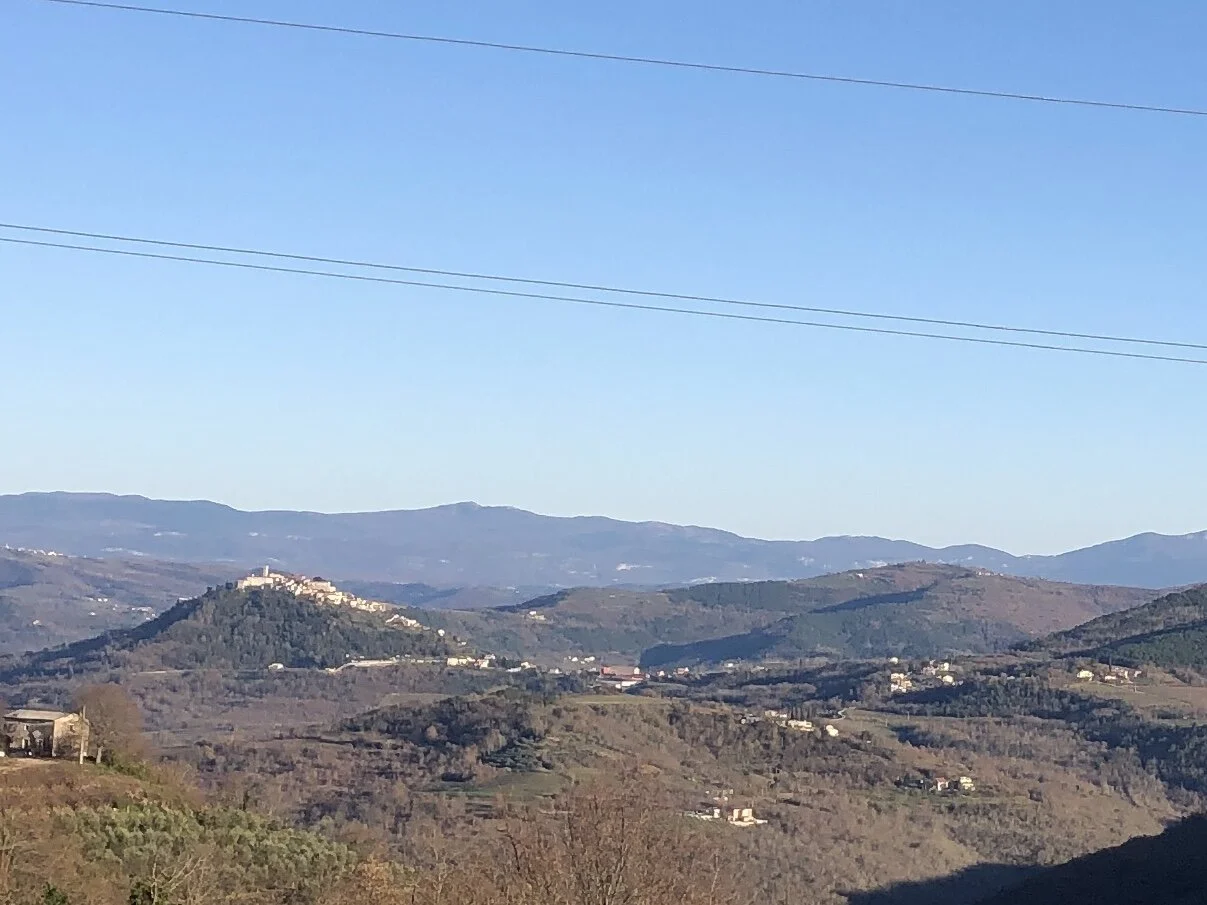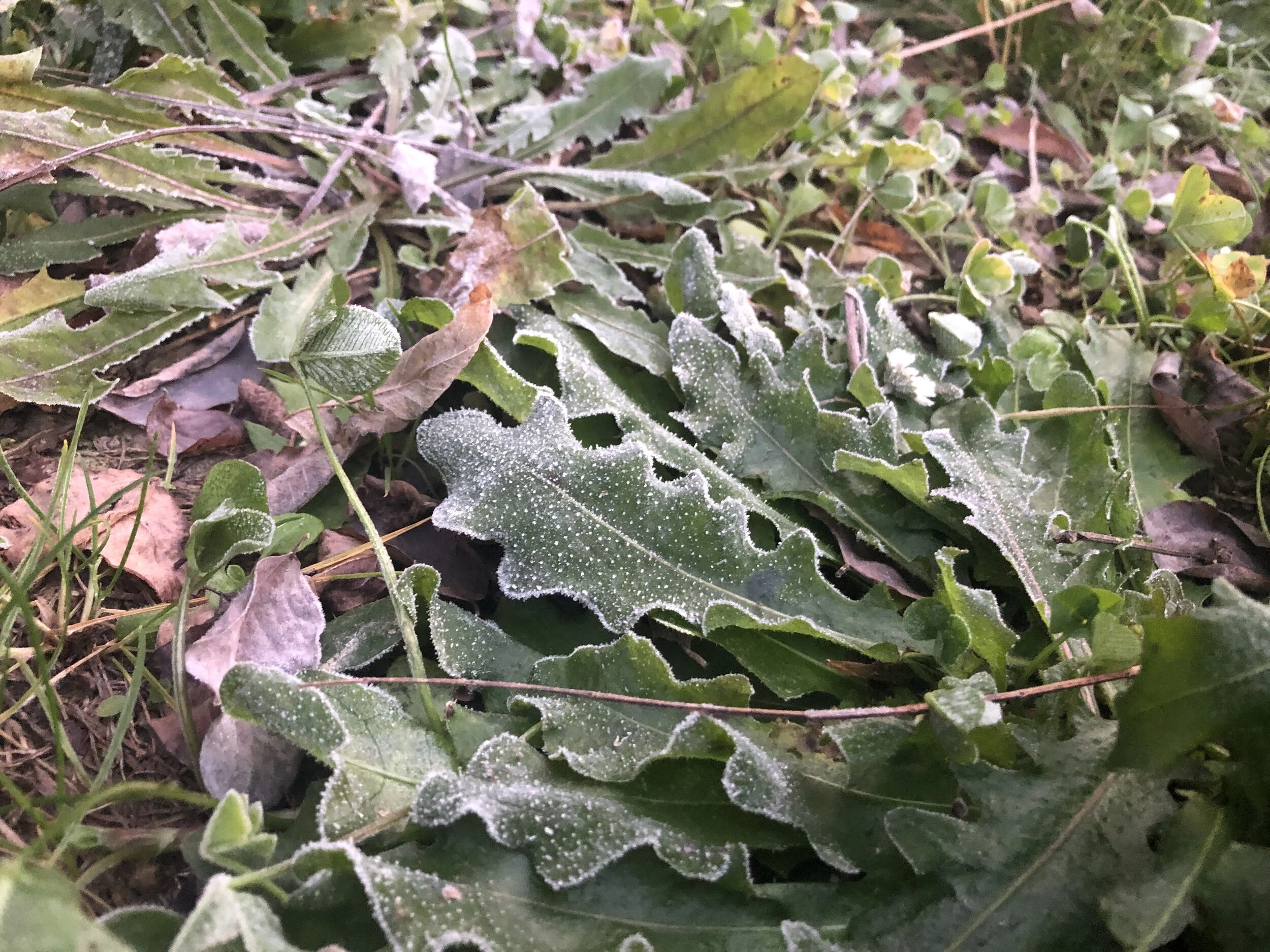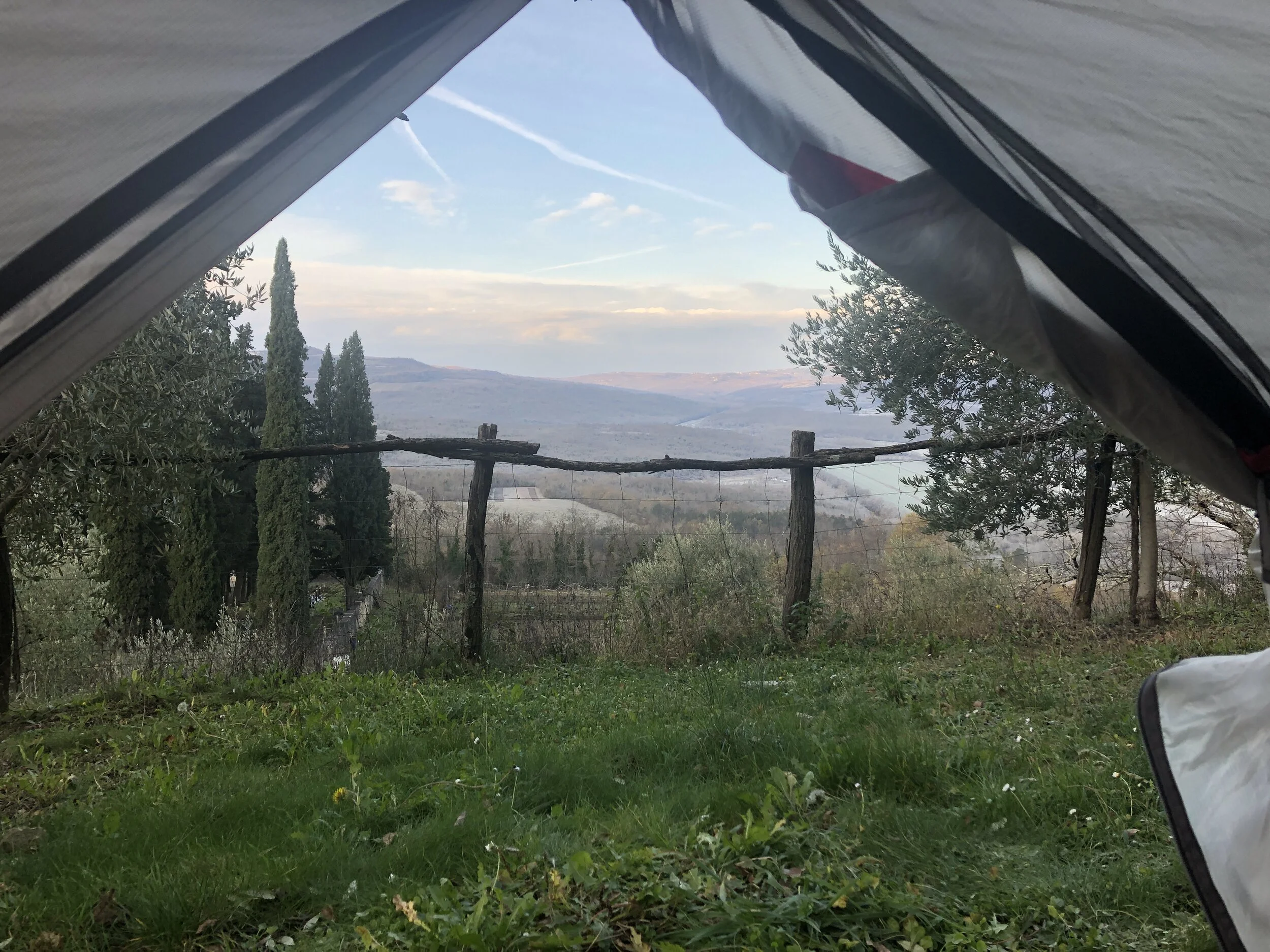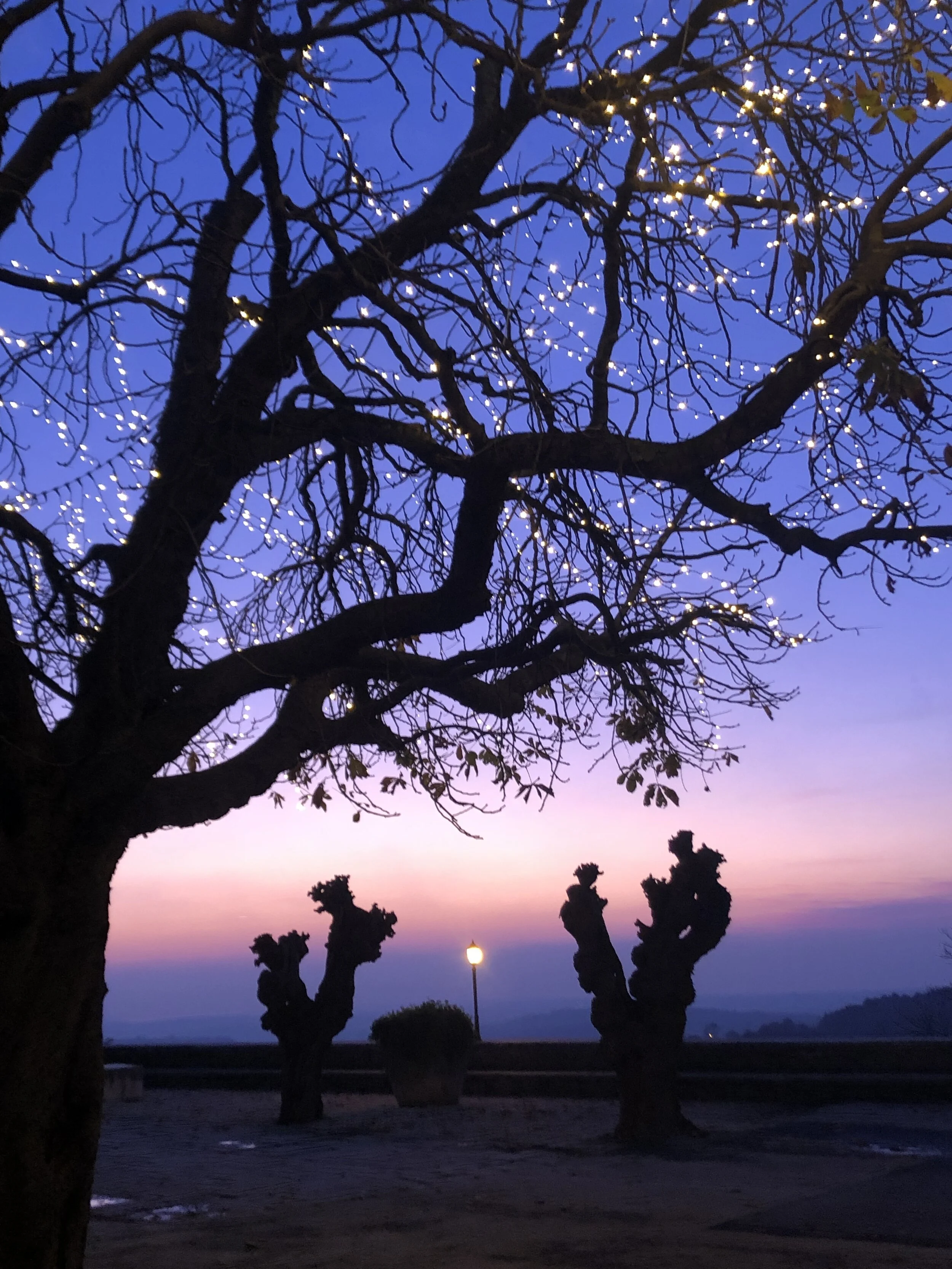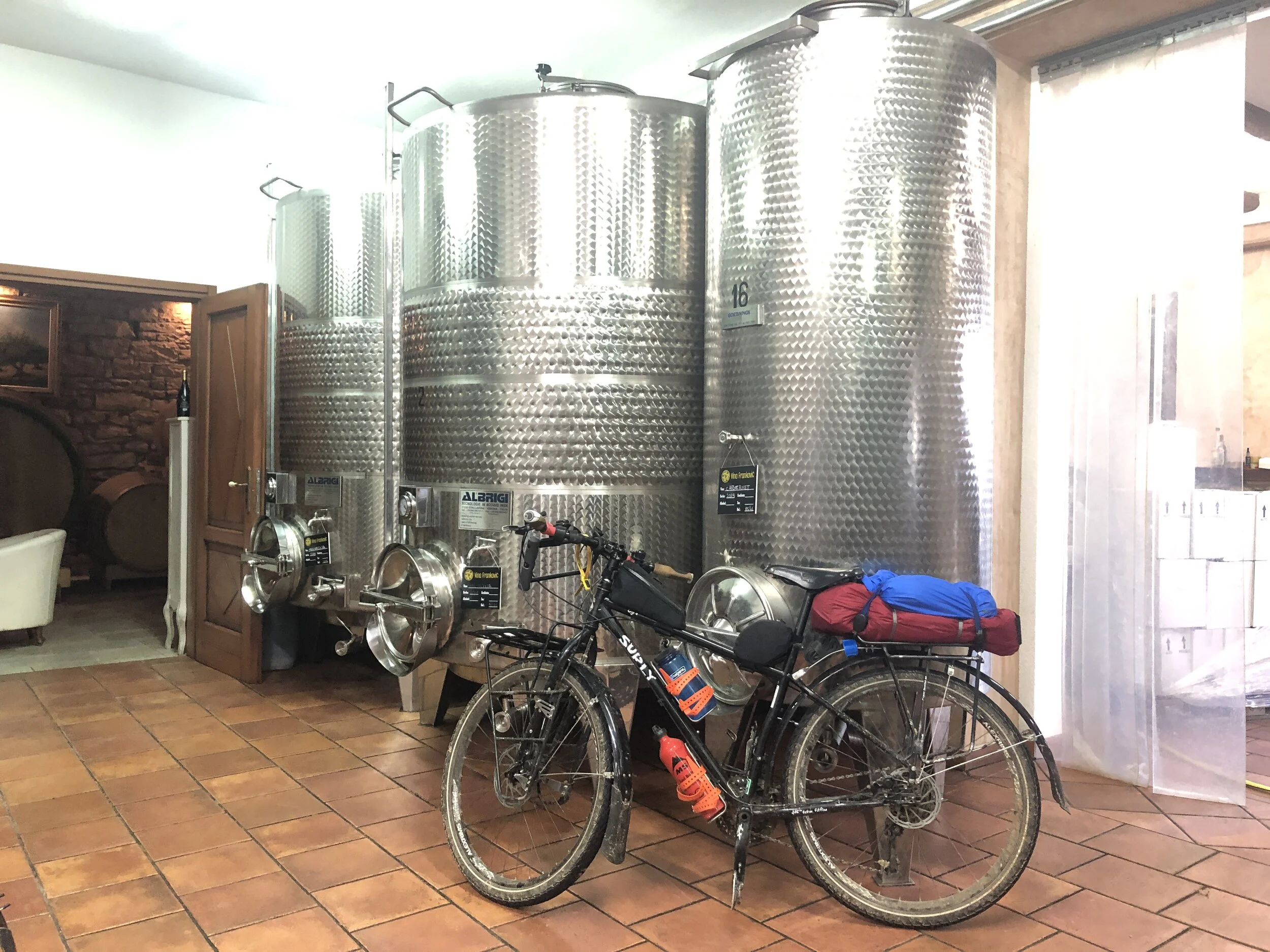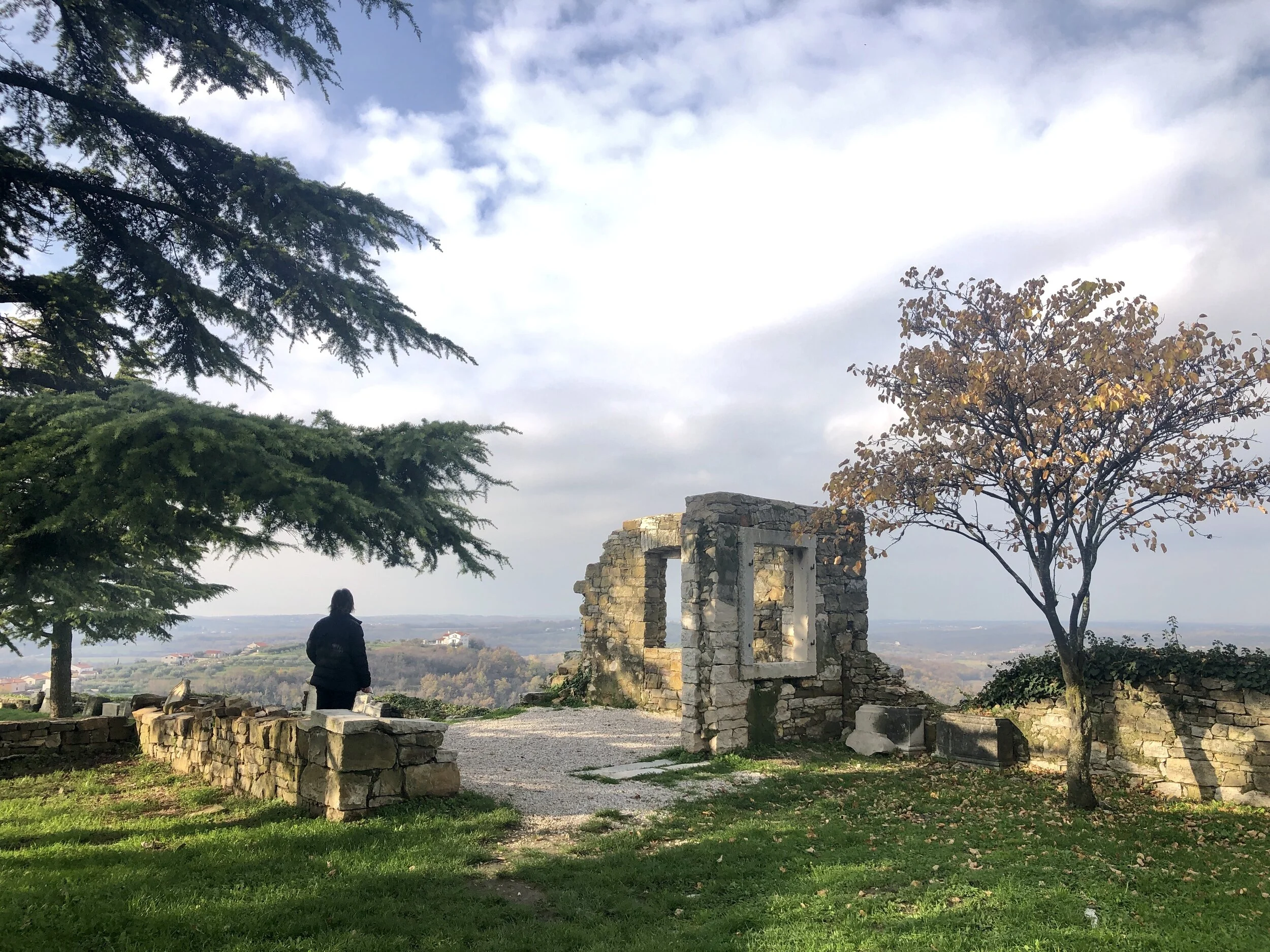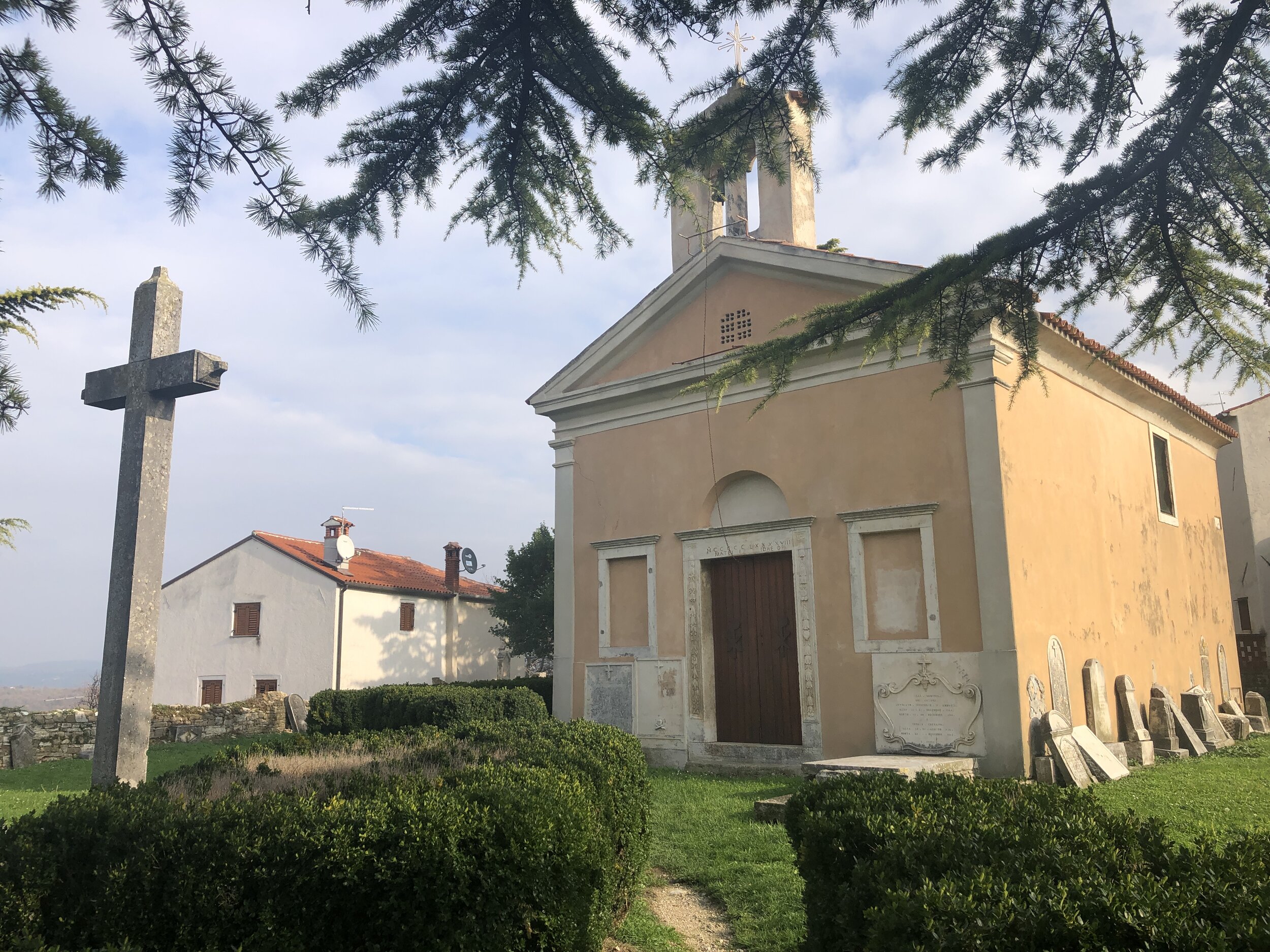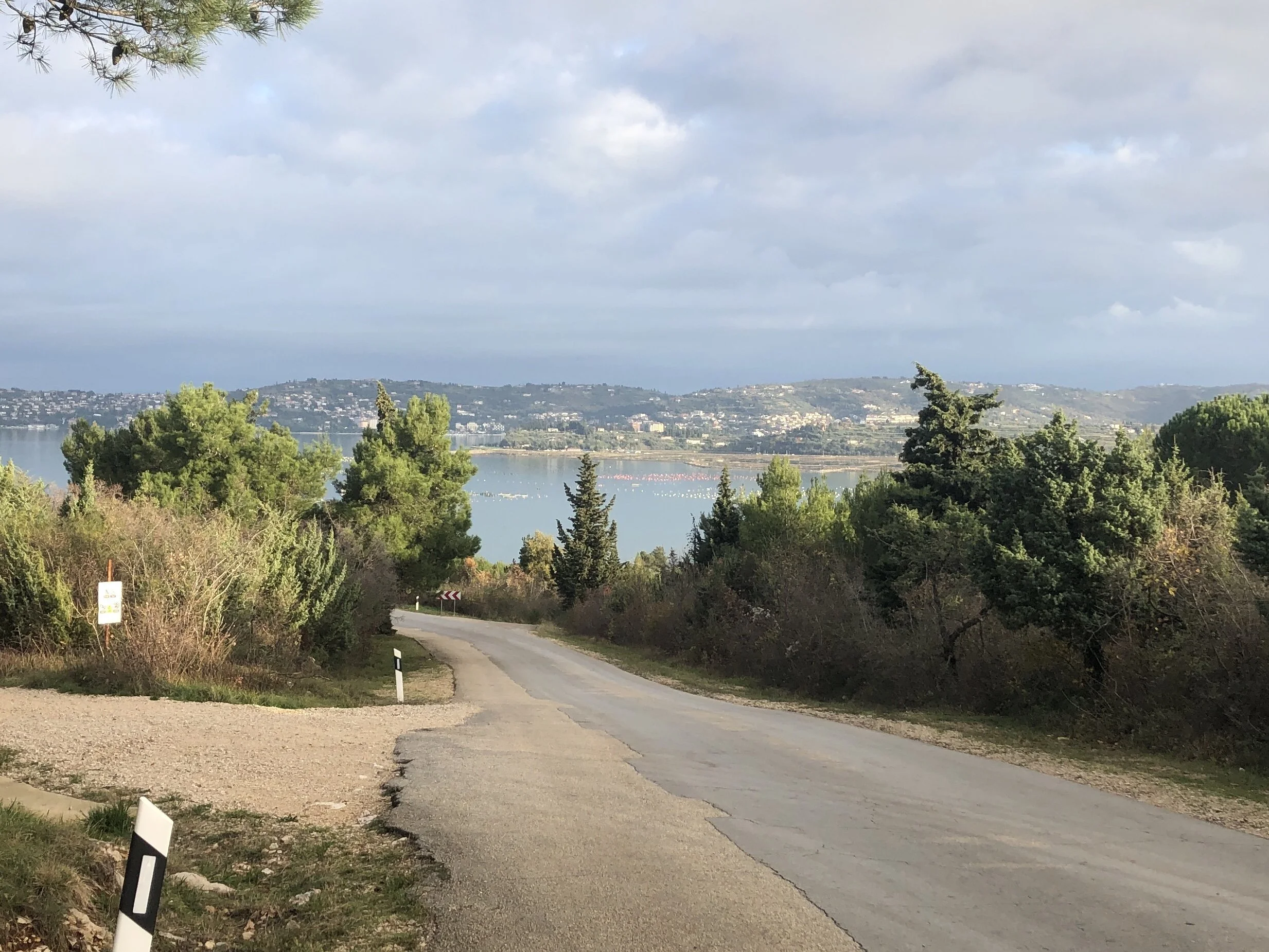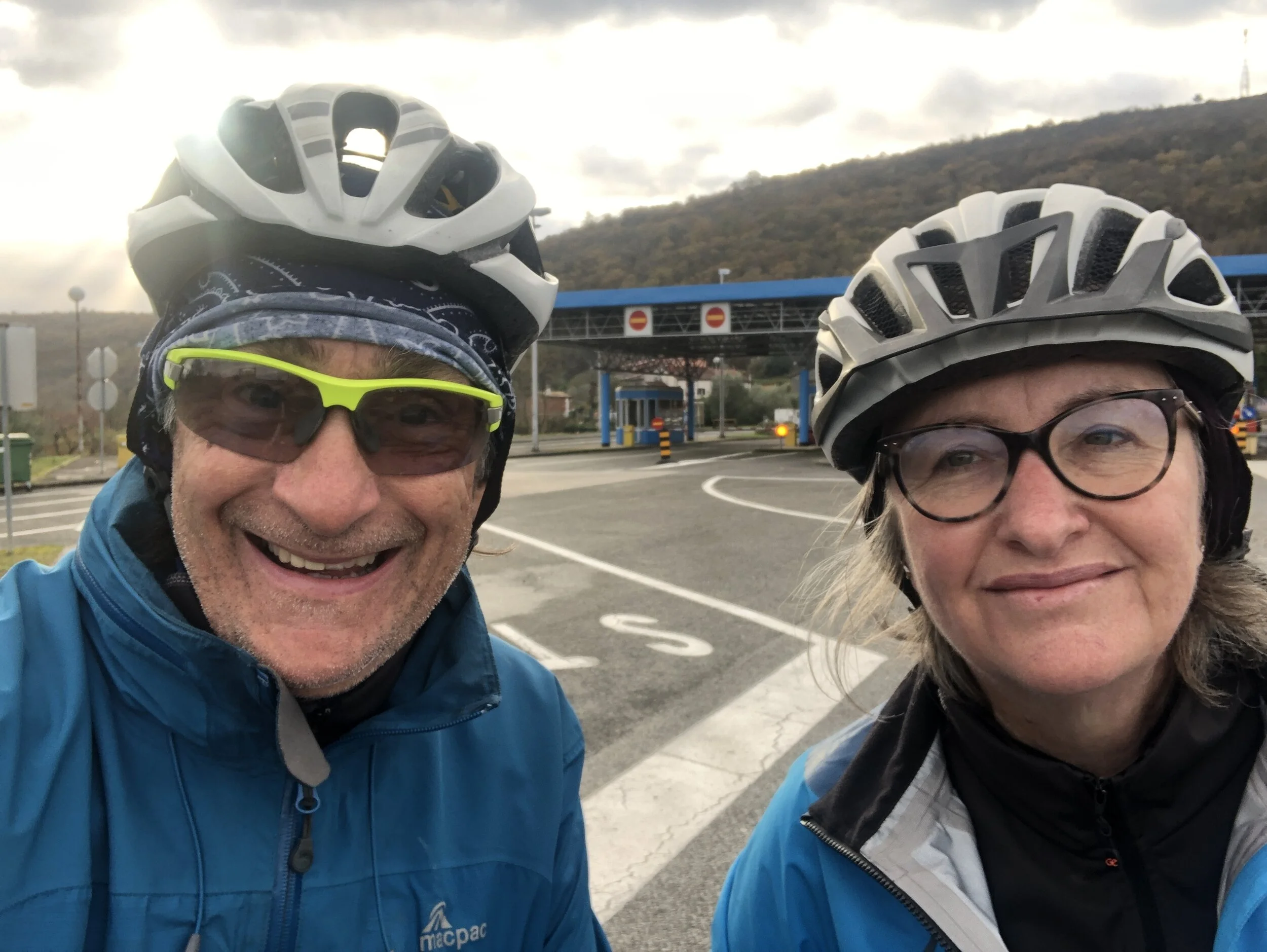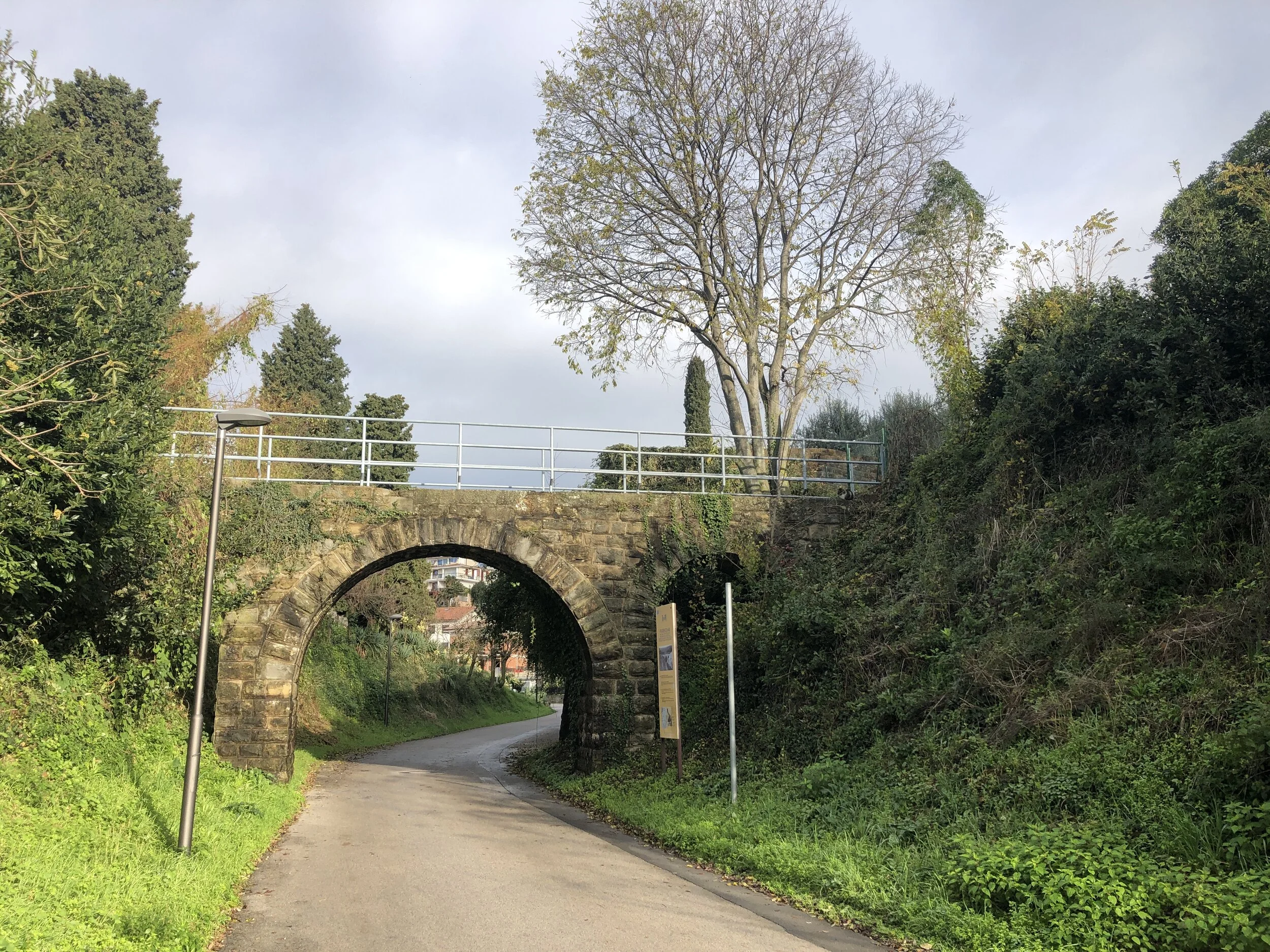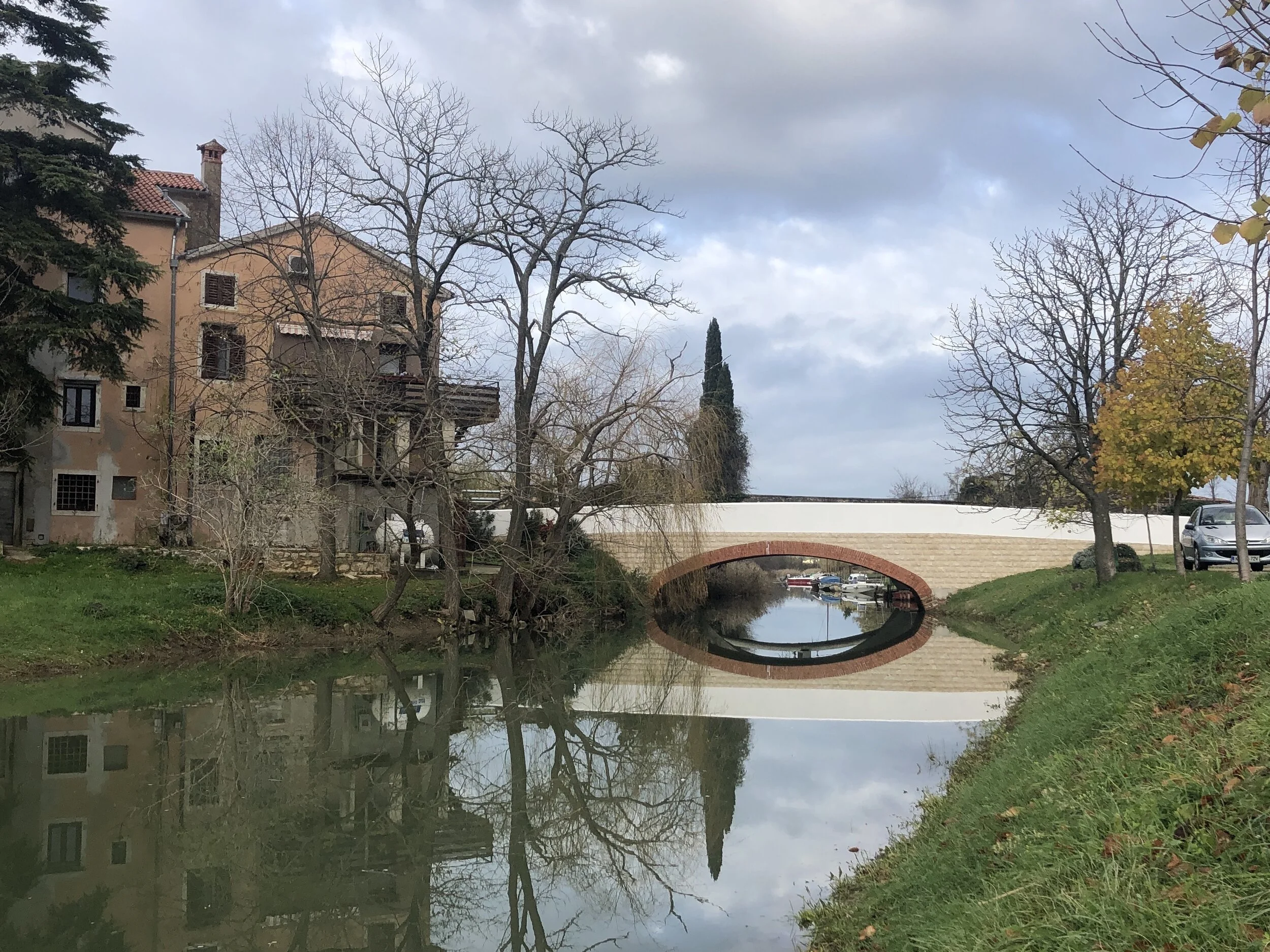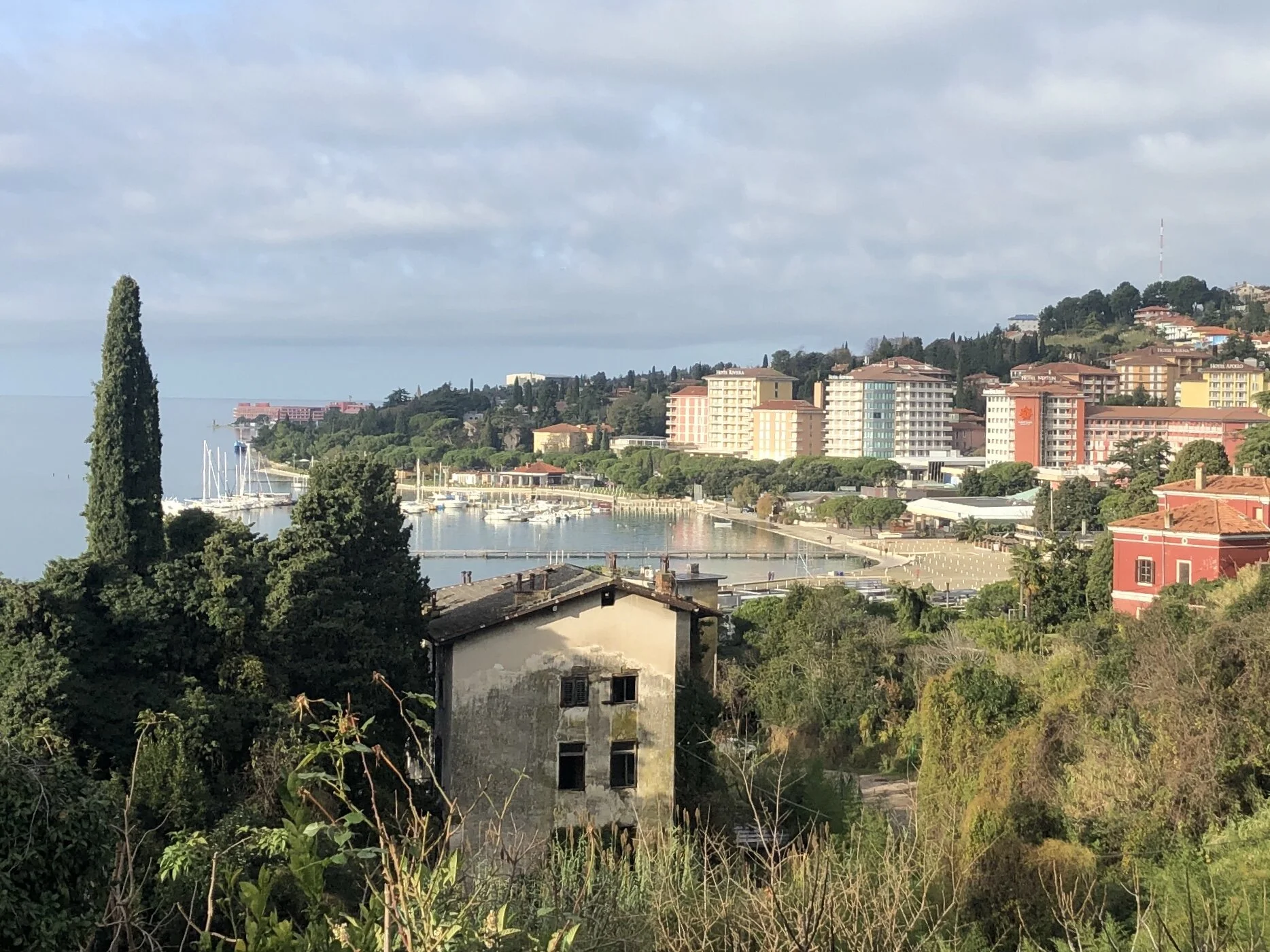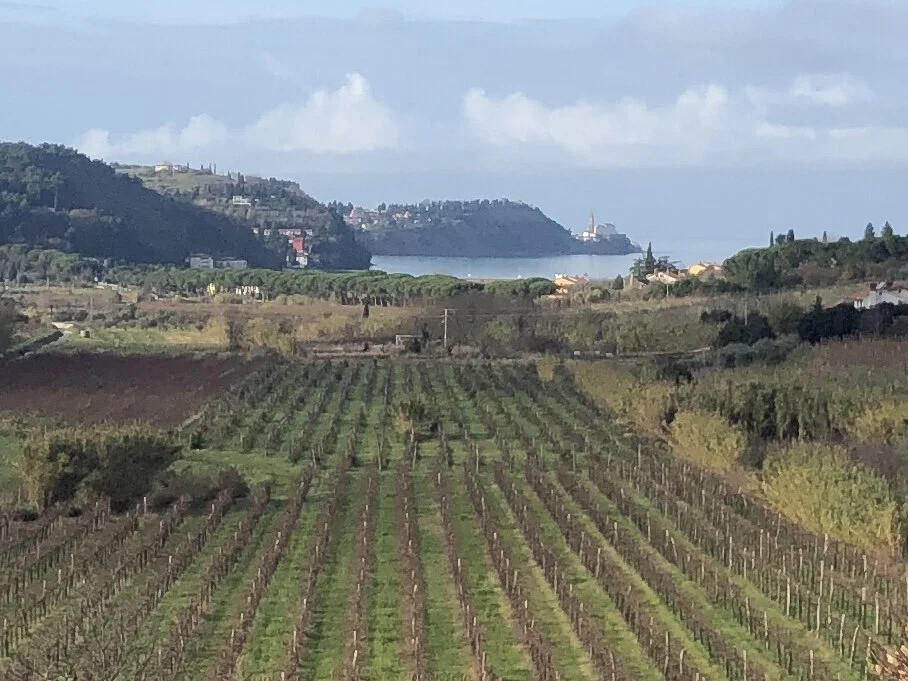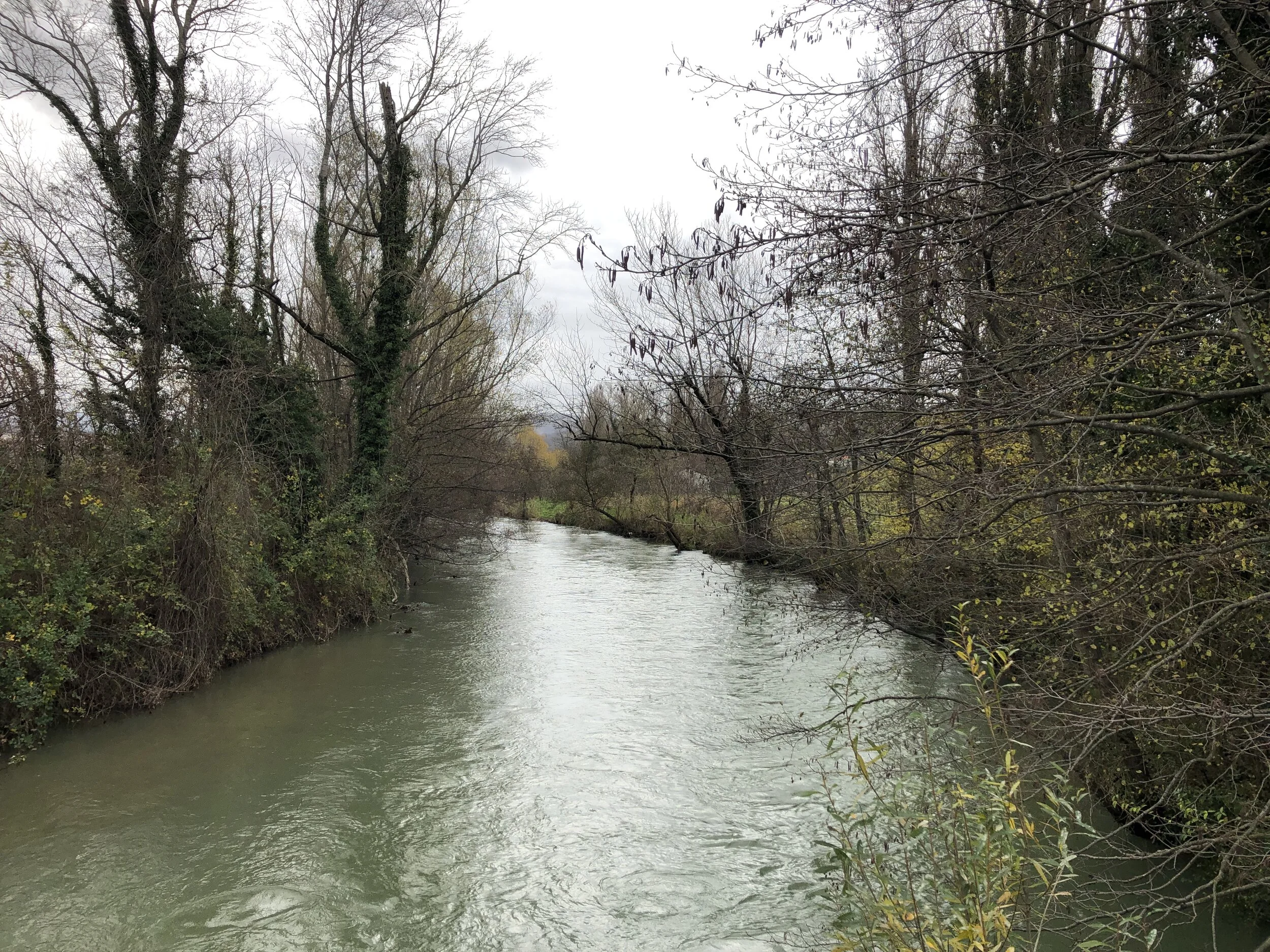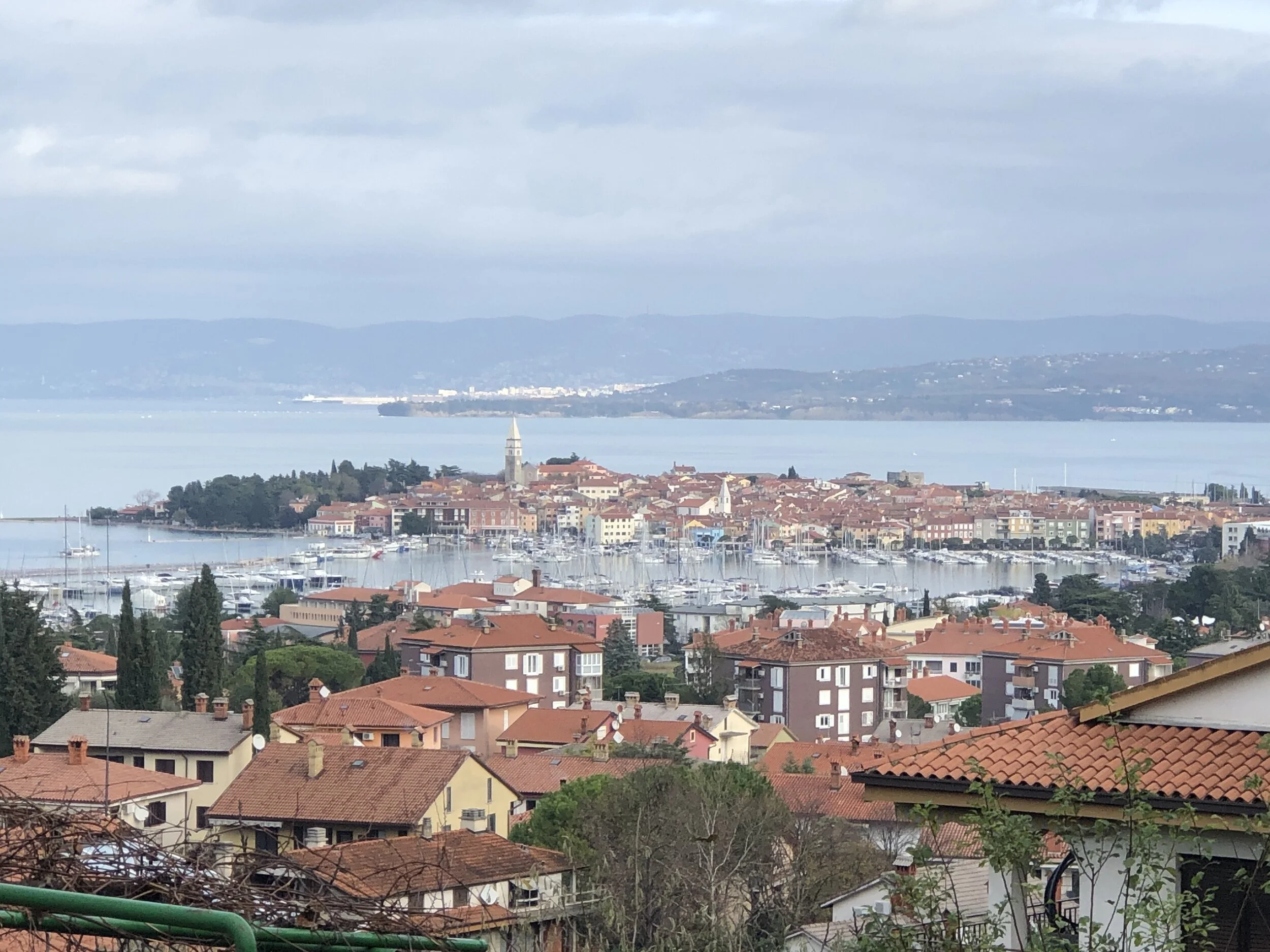Pedalling Parenzana
After a week off bike in Zagreb and Split we hopped back on the bikes to head north to Zadar cycling a mix of the mainland with some island hopping. The coast and islands are stunning and as it is off season we enjoyed the light traffic on the coast roads.
Our plan to spend a couple of weeks making our way to the Istria peninsula hit some challenges … firstly and very importantly the ferries. During off season ferries run to reduced timetables and there were some other challenges ... such as finding they were not stopping at some ports or they were passenger only and wouldn’t take bikes. The other challenge was Peter was feeling a bit below par so after a day that included a ferry debacle, a big hill climb and our first dodgy accommodation situation we made the call to skip the islands of Cres and Krk and head straight to Rijeka.
One of the joys of travelling is the unplanned moments ... and we were treated to one such moment in Rijeka. Arriving earlier than planned meant we were there for the start of Advent and on the Sunday evening they turned on the Christmas lights at Trsat Castle - a 13th century fortress overlooking the city ... accompanied by fireworks … a magical experience.
From Rijeka we set off to explore Istria. For the last 800 or so years the peninsula has been under the Venetian, Hapsburg, Napoleonic, Austrian and then Italian rule. Following WWII the majority of Istria became part of SFR Yugoslavia and after 1991 it was divided between Croatia and Slovenia. The Italian influence is still strong with street names in both Italian and Croatian and Italian is spoken in many places. The countryside is beautiful and there are olive groves everywhere - a tourism release states that Istria has been named the worlds best olive oil region for the past five years. They also love their truffles and wine … and everywhere you look there are medieval hilltop villages and coastal towns. Pula, one of the largest towns has a magnificent Roman amphitheatre that we were able to wander around by ourselves - the benefit of off season travel.
Back on our bikes we cycled the coast from Umag down to Poreč to set off on the Parenzana Trail through Slovenia to Trieste in Italy. Parenzana was a narrow gauge railway which connected Trieste with Poreč. Operating from 1902 until 1935 the railway line ceased due to unprofitability. It is said that on some sections the train was so slow that workers in the fields would wait till they saw the train, then leave the fields to go home, have a shower before heading to catch the train. We decided to ride the trail in three and a bit days so we could have one more night in Croatia before entering the Schengen Zone.
It was a clear, beautiful but cold day when we set off with the aim of cycling 36 kms to the medieval village of Motovun. We read that the 88 km Croatian section of the trail was gravel and most suited to mountain bikes. As we ride fully loaded touring bikes we knew it would not be easy ... but it was really, really slow going. As well as very rough gravel there had been a lot of rain so there were large areas of mud and sections through the trees with a thick carpet of sodden leaves. In some of the shaded areas the puddles were still covered with ice at lunchtime.
The first 20 kms was a steady climb and it wasn’t until we were about 10 kms in that it started to feel more like an old railway line ... the trail swept along the side of hills, and we cycled over viaducts and through tunnels. The entrance to each tunnel was signposted with the tunnel length and there were sensor lights along their length. Still headlights are extremely useful, as Leigh found in a long curved tunnel when a section of the sensor light didn’t work and she was too far behind Peter to have the benefit of his light ... we now know that the acoustics in the tunnel are quite good! The last 14 kms of day one was a fast but cold descent towards Motovun. Motovun is on a hilltop so the long tunnel underneath took us past where we wanted to stealth camp for the night ... so we had to backtrack and in fading light push our bikes up through a steep olive grove ... not the most enjoyable activity at the end of a day of cycling!
It was a cold night and when we set off for the 32 kms to Buje the next morning it was still only 2 degrees C ... so we piled on the layers. After a few kilometres downhill we commenced 18 kms of climbing. The sun didn’t break through the clouds and the temperature dropped to 0.2 degrees. Even though we had a steady cycle uphill on a rough track we had to add layers of clothing - it can be a bit challenging when you can’t feel your fingers to use your brakes. Then after lunch it started to rain ... so thankful for waterproof gloves! Despite the cold and the need to concentrate on keeping upright on the track there were many times where you just have to stop and take in the view. Looking out at the rural scenes it is not hard to imagine the view that train passengers would have seen 100 years ago. Though the trail is quite popular from spring to autumn, as it was December we only saw one other traveller, a lone hiker heading the other way.
The highest point of the trail is the tunnel at the artist village of Grožnjan so once through that tunnel our last 9 kms of day two, even in the rain, was a speedy downhill run. We had pre-booked an apartment in the centre of Buje and arrived quite wet, weary and cold. The owners let us store our bikes in their wine and olive oil cellar and then we slowly climbed the three flights of stairs to our cosy loft apartment and warmed up with pizza, fries and salad.
Day three was a glorious sunny day and a warm 10 degrees C. When we set off from Buje it was so clear we could see across the northern Adriatic to the snowy Italian Alps. We had planned a short day with no climbing staying in Valica, a small community just before the Slovenian border so we took our time, arriving at our accommodation early with enough time to do some bike maintenance and cleaning.
The final day (52 kms) of the trail was a total contrast. After 5 kms we crossed the border into Slovenia. In Croatia apart from the first couple of kms in Poreč we cycled through rural areas, skirting around or cycling under small villages. Once we were in Slovenia we were on asphalt cycle paths, cycling through towns and sometimes alongside major roads. Also as it was Sunday we shared the path with walkers, dogs, joggers and cyclists. Still the cycle through Slovenia was lovely and the tunnels were the best of the trail. Slovenia and Italy are Schengen countries so there was no formal border ... a small sign beside the path told us we were in Italy. In Italy there was no feeling that you were on a rail trail - it was cycling into a large city - with the added excitement/challenge of motor scooters. Also as Trieste is on an escarpment there was some climbing to end our day. Our final destination was an apartment in the old town just near Trieste Railway Station.
Parenzana Trail statistics:
3 countries
132 kilometres
about 65% gravel
8 tunnels
7 viaducts
breathtaking views - lost count
So this marks 1,300 kms, six countries and the end of Stage 1 of our Grand Tour. Time to pack up our bikes for a Christmas break with family in Switzerland and then France. Stage 2 starts 3 January in Portugal ... when once again we will just start pedalling.

